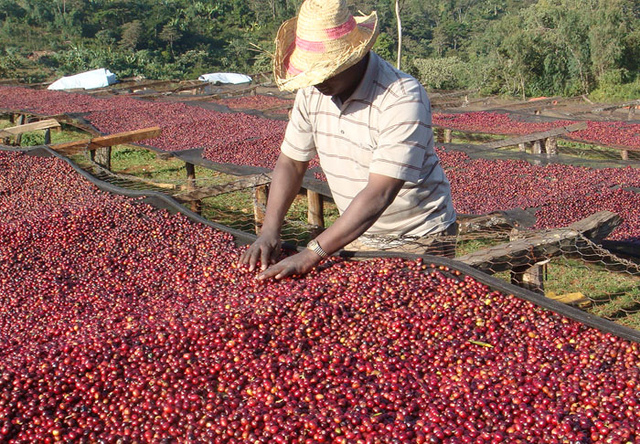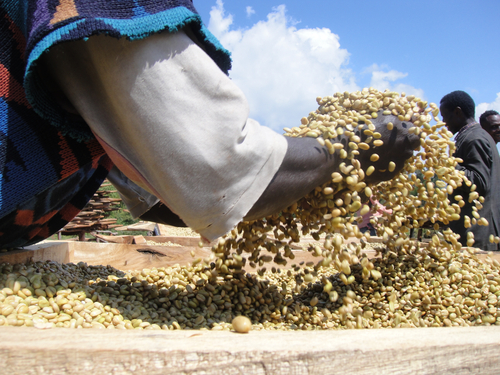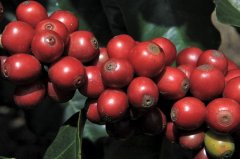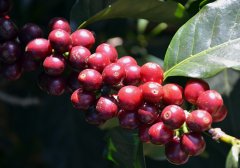Introduction to the planting Environment of Black Honey Coffee in Rivas Manor, Costa Rica

For professional baristas, please follow the coffee workshop (Wechat official account cafe_style)
Product name: Chateau Torres, Costa Rica, black honey Rivas people processing yard
(Costa Rica Brunca Finca Las Torres Catuai/Caturra Black Honey)
Flavor description: caramel, honey, spices, frankincense myrrh, pepper, cherry chocolate,
The feeling of fat is saturated, thick, mellow and sweet.
Award winning record:
Raw beans processed by the 33rd Treasure Manor in COE, Costa Rica in 2015 (Rivas people processing farm)
Country of origin: Costa Rica (Costa Rica)
Producing area: Branca
Manor: Torres Manor (Finca Las Torres)
Processing yard: Rivas processing yard (Rivense)
Variety: Kaduai / Kaddura (Catuai/Caturra)
Altitude: 1500 m
Grade: SHB micro-batch
Treatment: black honey treatment
Harvest time: NumberA

Introduction:
The Rivas Rivense is made up of the Mr. R é gulo Gerardo Ure ñ a Chac ó n family.
All a micro-processing plant, he started growing coffee 26 years ago, and the La Guaca in this area is
It means that the local natives have buried a treasure, but it has not been found so far, so it is named Treasure Manor.
(La Guaca) is of deep historical and cultural significance. Treasure Manor is located in the beautiful Blanca.
(Branca) producing area, between two Cerro de la Muerte and Cerro Chirrip ó peaks
The Cerro Chirrip ó Mountains are the highest peaks in Costa Rica. Coffee is grown at an altitude of about 1600.
The area of rice, micro-climate and geographical environment create high-quality coffee, today Mr. R é gulo
And his wife Isabel and their four children, Ricardo, Mario, Esteban and Luis y Tatiana
Started using the water treatment plant Caf é Rivense del Chirrip ó S.A., because of this small area.
All coffee production is made in 100% sunlight. Regulo attaches great importance to the ecological environment, virgin forest
Shading by planting fruit trees, protection of natural water resources and ecosystems, and conservation of wildlife.
The relevant authorities' Ecological Blue Flag Award (the Ecologic Blue Flag award). Mr. R é gulo
He and his family were the first to win the COE Cup in Branca, a burgeoning producing area.
The winner of. The family has its own "Rivas disposal yard", except for dealing with its own manor.
In addition to raw beans, they also help nearby manors to handle raw bean services. This batch of Torres Manor (Finca Las Torres)
Black honey is treated because of the famous treasure manor in the Branca producing area, which helps to help.
Busy with raw beans, you can also open your popularity and sell to the outside world.
Costa Rican coffee cultivation was introduced from Cuba in 1779 and exported for the first time in 1820.
There are about 32000 coffee farmers, with an average planting area of less than one hectare (10000 hectares) per farmer.
Costa Rica has a population of 41 billion (2006), with a coffee planting area of 82500 hectares and annual production.
1.7 million bags (60kgs per bag), with an annual domestic consumption of 380000 bags, with an average annual consumption of 5.5kgs per national
It is higher than Japan's (consumption of 4kgs), and the average Taiwanese are only slightly higher than 1kg.
Costa Rica is the country where coffee was first introduced into Central America. It has a long history and is self-produced by coffee organizations.
Until the sales system is complete. Because it is located in the Central American Gorge, there are many volcanoes in the territory, which has the natural advantages of sunshine and land.
The climate is reconciled by Pacific and Atlantic currents and sea breezes at the same time, and the coffee produced is local.
Due to the characteristics of micro-climate and local conditions, Costa Rican coffee has always been recognized by the world in terms of quality and quantity.
Rated as one of the world-class high-quality coffee. Costa Rican coffee has been grown for 200 years.
Originally planted on the slopes of Poas and Barva volcanoes, it is now known as the Central Valley (Central Valley).
The seven main coffee producing areas are from northwest to southeast, along with the inland central plateau.
The Costa Rican volcanic terrain has fertile volcanic ash, mild and suitable temperatures, and stable and abundant rainfall.
It is one of the reasons why coffee has become one of the main agricultural products in Colombia. The seven major producing areas are: Tarrzu,
Tres Rios 、 Orosi 、 Central Valley 、 West Valley 、 Turrialba 、 Brunca .
At present, Colombia has a total population of about 4.5 million, but there are as many as 400 million coffee trees, accounting for coffee exports.
The country accounts for 25% of the country's total exports, and local statistics show that about 1% of the population goes into coffee-related activities.
In the industrial chain, it is not too much to say that coffee has changed the living standards of this country.
Costa Rica has a unique natural environment, fertile volcanic ash, mild and suitable temperature
And stable and abundant rainfall, sufficient sunshine time during the day, and significant temperature difference between day and night.
It is one of the reasons why coffee has become one of the main agricultural products in Colombia. They also produce different grades.
Coffee raw beans, from commercial Arabica beans to coffee from the Outstanding Cup Coffee Competition (COE)
Raw beans, as well as the palace-level geisha coffee variety (Geisha), plus countless white, yellow, red and black
Various post-processing methods are dazzling and numerous. But with the evolution of boutique coffee
The norms of large producing areas can no longer satisfy the curiosity of lovers chasing high-quality coffee, leading to more and more
In the mini-area, a small batch of small estates was unearthed.
This micro-batch of Torres Manor Black Honey is manufactured by the Rivas people processing Plant of the Treasure Manor.
Service processing, this black honey treatment technology was ranked 33rd in Costa Rica's COE in 2015.
Treasure Manor is a masterpiece of its own processing farm. Flavor description: caramel, honey, spices,
Frankincense myrrh, pepper, cherry chocolate, fat saturated thick, mellow and full-bodied sweet.
Important Notice :
前街咖啡 FrontStreet Coffee has moved to new addredd:
FrontStreet Coffee Address: 315,Donghua East Road,GuangZhou
Tel:020 38364473
- Prev

Introduction to the award-winning flavor of sun-tanned coffee in Fairview Manor, Tangmeo processing Plant, Costa Rica
Professional barista exchanges please follow the coffee workshop (Wechat official account cafe_style) Product name: Costa Rica Tangmeo processing Plant Fairview Manor Sun treatment (Costa Rica Don Mayo Finca Bella Vista Natural) Flavor description: flowers, orange fruit notes, cocoa, roasted walnut aroma, lively sweet and sour, syrup smooth 2017
- Next

Costa Rica 2016 COE third Runner-up Brumas processing Plant Centro Manor Verassa Singularity Red
For the exchange of professional baristas, please follow the coffee workshop (Wechat official account cafe_style) Product name: Costa Rica 2016 second Runner-up Brumas processing Plant Centro Manor Verasa strange red honey (Costa Rica Brumas del Zurqui El Centro Villa Sarchi Red Honey) flavor description: Alpine pear, ripe orange fruit, flower notes, baking
Related
- Detailed explanation of Jadeite planting Land in Panamanian Jadeite Manor introduction to the grading system of Jadeite competitive bidding, Red bid, Green bid and Rose Summer
- Story of Coffee planting in Brenka region of Costa Rica Stonehenge Manor anaerobic heavy honey treatment of flavor mouth
- What's on the barrel of Blue Mountain Coffee beans?
- Can American coffee also pull flowers? How to use hot American style to pull out a good-looking pattern?
- Can you make a cold extract with coffee beans? What is the right proportion for cold-extracted coffee formula?
- Indonesian PWN Gold Mandrine Coffee Origin Features Flavor How to Chong? Mandolin coffee is American.
- A brief introduction to the flavor characteristics of Brazilian yellow bourbon coffee beans
- What is the effect of different water quality on the flavor of cold-extracted coffee? What kind of water is best for brewing coffee?
- Why do you think of Rose Summer whenever you mention Panamanian coffee?
- Introduction to the characteristics of authentic blue mountain coffee bean producing areas? What is the CIB Coffee Authority in Jamaica?

